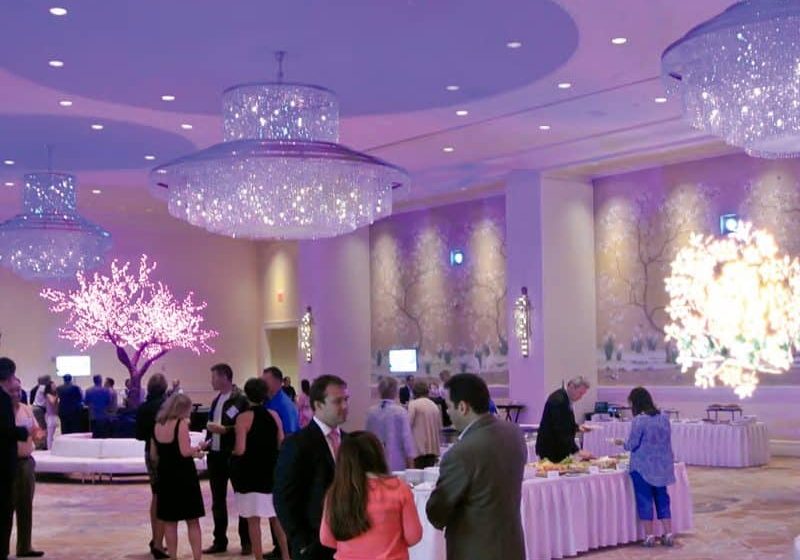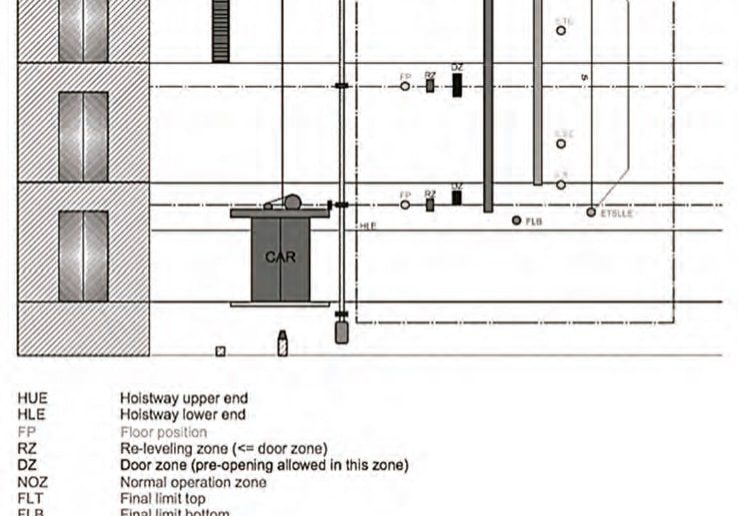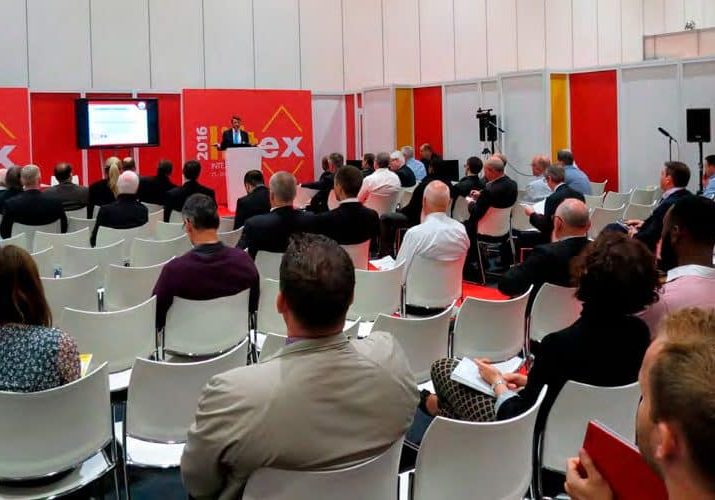Africa
Sep 1, 2016

Increasing urbanization and a growing retail sector, particularly in South Africa, present opportunities for vertical-transportation companies.
As urbanization continues in Africa, the continent’s cities strive to address issues, such as the need for more space and energy conservation. These issues, along with a robust retail sector in South Africa, create opportunities for vertical-transportation companies, especially those that manufacture machine-room-less (MRL) elevator systems, a technology elevator companies say that, despite shortcomings, addresses the issue of inadequate space, since these systems eliminate the need for a machine room. MRL systems are also said to utilize 30%-80% less energy compared to other types of solutions.
Decreasing urban space in some of Africa’s cities has created an opportunity for real-estate developers to build taller buildings. Yet, there are property consumers in Africa who prefer low- to mid-rise buildings because of their perceived ease of access by users. Other benefits include safety provisions in case of a fire, likely lower cost compared with taller buildings and more land for other uses, such as warehouses and parking lots.
With the issues of space and energy efficiency in the backs of the minds of many real-estate developers and contractors, the sector’s future in Africa looks promising if the findings and projections of various market researchers and analysts come to pass. “In almost all of Africa’s markets, demand for high-quality retail, office and industrial accommodation outstrips supply as international and local occupiers respond to the improving economic outlook,” says a report by multinational professional services firm PricewaterhouseCoopers (PwC).[1]
This is particularly true in South Africa, where the real-estate sector continues to grow, fueled by an increasing middle class and massive urbanization. Although the country’s economy grew by 1.3%, down from 1.5% in 2014 and 2.2% in 2013, the drop did not hamper progress in specific economic sectors, which partly accounts for the steady rise in urban population to an estimated 62% of the country’s 53 million people.[2]
The growth of the retail sector in South Africa has not only attracted world- famous retailers into the country, but also created huge demand for escalators and elevators.
PwC notes South Africa’s urban population is expected to reach 70% by 2030, triggering a surge in demand for housing. Further, “pressures of increased urban density will start to present regeneration opportunities, such as in areas within the Johannesburg Central Business District, where old office buildings are being transformed into residential premises with varying levels of success,” PwC states in a report.[2]
South Africa Is the Place for Malls
Of more interest to building-transportation companies in South Africa is the growth of the retail sector, which has not only attracted world-famous retailers into the country, but also created huge demand for escalators and elevators. PwC says the retail sector ranks at the top of the South African property market, fueled by a fast-growing middle class with an average disposable income of US$1,100 a month.
The South African Council of Shopping Centres (SACSC) observes the country has the sixth-highest number of shopping centers of any country in the world, boasting almost 2,000 centers with a floor area covering 23 million m2.[3] SACSC President Nomzamo Radebe said retail and retail property are the “most exciting and innovative industries” in South Africa,[4] and the two are playing significant and valuable roles in the country’s economy. This is best illustrated by the emergence of new shopping malls in recent months in many parts of South Africa that have become major consumers of passenger elevators, escalators and moving walks.
According to Urban Studies, which conducts feasibility studies for developers, it is estimated South Africa has 1,785 malls with more than 40% of shopping-center space located in Gauteng province, the country’s most urbanized area and home to South Africa’s largest city, Johannesburg; administrative capital, Pretoria; and two of the largest industrial areas, Midrand and Vanderbijlpark.[5]
It is not only major metropolises that are seeing activity. Commercial property management company Broll’s Division Director of Research Elaine Wilson says South Africa is “seeing more and more shopping centers in rural areas and towns, and, in Johannesburg, it is not stopping.”[6] Dirk Prinsloo, managing director of Urban Studies, notes that “people are dusting off old plans that were put on the shelves in 2008 when the recession started. . . and there are other new opportunities [for] people [to] move into the rural areas.”[6]
The obsession with modern mall construction, especially in major cities such as Johannesburg, Durban and Pretoria, means brisk business for the numerous players in the South African vertical-transportation market. They include Otis, KONE, United Elevators, NESA Elevators & Escalators, Shorts Lifts, Vision Elevators, Mitsubishi Electric and Schindler South Africa.
In April, South Africa’s largest shopping mall to be built in a single phase, Mall of Africa, opened its doors in Johannesburg after nearly four years of construction, boasting more than 300 shops. The US$220-million property, developed by Atterbury, provides 130,000 m2 of retail space over 550,000 m2. It has 49 sets of lifts and hoists with 40 escalators, representing a major boost to South Africa’s building-transportation market. PwC notes the entry of Mall of Africa will likely bring South Africa’s retail penetration to 80%, representing its peak.[7]
Overall Growth Yields Mix of High-, Low-Rise Buildings
While South Africa leads the way in terms of urbanization, the rest of the continent is not far behind. The increasing demand for high-quality retail, office and industrial accommodation described by PwC has been attributed to the expanding middle-class population in Africa and changes in consumer behavior. The African Development Bank estimates the share of the region’s urban population is likely to increase by 50-60% by 2030, up from 36% in 2010.[8]
The United Nations estimates Africa’s population will increase from 414 million in 2012 to more than 1.2 billion by 2050. The continent’s middle class accounted for 34.3% of the population in 2010, up from 26.2% in 1980. In Kenya, this segment of the population was estimated at 44.9% of the total.[9]
The obsession with modern mall construction, especially in major cities such as Johannesburg, Durban and Pretoria, means brisk business for the numerous players in the South African vertical- transportation market.
Real-estate developers are embracing a mix of high- and low-rise structures to accommodate this surging urban population in a society quickly becoming conscious of the need to conserve both space and energy. Although there are no precise statistics to confirm the high- or low-rise building trend in Africa, some experts say both types of buildings have advantages that could address the twin issues of diminishing urban space and inadequate energy supply. Fasil Giorghis, chair of Conservation of Urban and Architectural Heritage at the University of Addis Ababa, observes: “High-rise buildings contribute to increasing (population) density, but the advantages of going higher are relative, and, at a certain point, they are no longer there.”[10]
Although PwC says more investors are being drawn to Africa’s real-estate sector by the prospect of 20% returns across the region’s markets,[1] Giorghis gives the example of Ethiopia’s capital city, Addis Ababa, of which he says, “Construction costs are a lot more expensive for high rises and are, thus, unaffordable to lower-income groups.” Giorghis notes there is a future in low-rise buildings, which Stiftung says are more cost-efficient and allow people of different income groups to remain in the same neighborhoods.[10]
Consultancy firm KPMG, however, says Africa presents opportunities for real-estate developers with an appetite for building tall. The firm points out that constructing high-rise buildings in Africa is, on average, cheaper than it is in other “emerging and frontier cities.” The firm’s view is that large retail and commercial facilities are more expensive because they include a large component of imported materials, and the costs of transporting these items to remote areas, spending on water/sewerage tanks where infrastructure is deficient and accommodating and remunerating specialist personnel from abroad are higher than in comparable areas.[11]
Energy Challenges
The major challenge for many African cities (and one with which elevator installers in the region have had to grapple) is Africa’s weak power-generating capacity that the World Bank says shaves off up to 2.1% of the region’s gross domestic product due to frequent power outages. Blackouts leave many elevator systems idle for several hours in cases where the buildings do not have an alternative power supply. Africa’s chronic power problems have escalated in recent years into a crisis affecting 30 countries, taking a heavy toll on economic growth and productivity.[12]
The situation has fueled demand for elevator solutions that conserve or use less energy, considering that many property owners have installed expensive diesel-powered generators to ensure elevators remain functional during periods of outages or load shedding.
Many suppliers, experts and consumers say MRL elevators fit the bill and that the future looks bright for such systems in the African and Middle Eastern markets if issues related to codes, installation and maintenance are effectively addressed. According to U.S.-based market researcher Freedonia Group, “Space- and energy-saving [MRL] elevators will continue to increase their penetration of the global elevator market through 2017 and will dominate the market in ensuing years.”[7] Freedonia adds that “the equipment market will focus on energy-efficient elevators, escalators and moving walkways.”[7]
This focus is evident in the newest high rises being built. In Nairobi, the capital of Kenya, Kings Developers is building the 34-story Kings Prism Tower. Sporting a distinctive, triangular-patterned design, the tower will harvest rainwater to nourish nearby vegetation, have motion sensors that limit unnecessary light usage and boast water-conserving bathroom fixtures.[8] It was designed by A + I Design of New York City (NYC).
New equipment being installed is often of the energy-efficient variety. At the Otis installation at Mall of Africa, for example, the company’s ReGen technology is being used. By utilizing “energy created by the movements of the lift cabins (down with a heavy load, or up with a light load), and feeding this energy back into the electrical grid,” the regenerative-drive technology could help reduce energy use at the mall by 75% compared with traditional drives, Otis observes. Otis adds: “The Gen2 Switch elevator, suitable for up to seven stories, has the added benefit of being simpler to install, more sustainable and safer during power failures or outages.”
Although no precise current statistics can be found on the supply of MRL elevators in the African market, KONE, which launched the world’s first MRL elevator system in 1996 together with its signature EcoDisc® hoisting machine, has recently increased its presence in Africa, particularly in East Africa.
The Finnish elevator firm acquired the elevator and escalator business of Marryat & Scott (Kenya) Ltd. and Marryat East Africa Ltd., its authorized distributor in East and Central Africa, in 2014, saying the move promises to “help KONE. . . improve the availability of KONE’s People Flow solutions in Kenya, Uganda, Rwanda and Tanzania.”[9]
Despite the dual challenges of lack of space and energy supply in Africa’s cities, KPMG did a survey two years ago that pointed out an increasing appetite for a share of the region’s market by global construction and engineering firms. “Among the 165 senior leaders in the construction and engineering industry polled, almost 50% are planning to move [into] new geographies [and that the] African continent is the most popular prospect.”[6]
OEMs Are Optimistic about South Africa, the “Gateway to the Sub-Saharan Zone”
Mall of Africa opened its doors nearly two years after Otis was awarded a vertical-transportation contract for the 65,000-m2 Matlosana Mall, developed by Abacus Asset Management in Klerksdorp, which has since attracted 145 store operators. Matlosana Mall, owned by Redefine Properties, is equipped with four Otis XO-508 escalators, three FO-VF goods lifts and four Gen2® ReGen lifts. Retail tenants served by Otis units include Checkers, Pick n Pay, Woolworths, Edgars and Foschini.
Otis, which last year acquired the South African service arm of thyssenkrupp Elevator, said the four Gen2 ReGen lifts replace old rope technology with “flat, polyurethane-coated steel belts.” This, Otis states, is revolutionizing vertical transportation throughout South Africa. “The energy-efficient system delivers smooth, quiet performance, while offering flexible, space-saving configurations and rapid installation,” Otis notes.
Otis’ South African footprint cuts across commercial and residential buildings with installations in two of Africa’s 10 tallest buildings — the 732-ft.-tall Carlton Centre in Johannesburg and 492-ft.-tall South African Reserve Bank in Pretoria. Other Otis installations are at the Chris Hani Baragwanath Hospital in Sowito; Sasol Polymers and Clearwater Mall in Johannesburg; Sandton City in Sandton; and the Golden Acre Shopping Center, Groote Schuur Hospital, Houses of Parliament complex and Ritz Hotel in Cape Town.
Although the retail market continues to fuel demand for new building-transportation equipment, South Africa also provides a good market for companies keen on maintenance and modernization, especially for systems in the country’s tall buildings such as Marble Towers in Johannesburg, Pearl Dawn in Umhlanga or the 88 On Field building in Durab. These structures are among the top 10 tallest buildings in Africa.
In fact, South Africa is home to at least six of the 10 tallest buildings in Africa, including the continent’s long-reigning champion, the Carlton Centre, owned by the country’s largest transport logistics company Transnet. The Carlton office building, which was designed by Chicago-based Skidmore, Owings & Merrill and constructed by Murray & Roberts, has 23 elevators supplied by Otis.
Unlike many Sub-Saharan building-transportation markets, South Africa has continued to attract leading vertical-transportation equipment suppliers in recent years because of the perception the country is a safe investment platform and suitable launching pad for those keen on expanding their African foothold.
KONE, Mitsubishi Electric and Schindler are among OEMs that have penetrated this market. Mitsubishi Electric opened an office in Johannesburg in May 2015. In announcing the move, Mitsubishi Electric Europe B.V. President & CEO Yoji Saito said:
“South Africa is one of the largest markets on the African continent, benefitting from a well-developed business environment and an established infrastructure. It is the gateway into the Sub-Saharan zone, which, with its growing population, promises strong potential for future growth.”
Last year, Schindler described South Africa as the largest elevator and escalator market on the continent, after the company was awarded a contract to supply nine 7000 high-rise elevators with PORT technology, six 5500 elevators and two 9300 AE escalators for the PwC tower in Johannesburg.[11] Overall, Schindler estimates it has supplied 90 units, many of them 5500 elevators and 9300AE escalators for buildings such as Discovery Sandton in Sandton, Umlazi Mega City in Durban, and V&A Grain Silo and Netcare Christiaan Barnard Memorial Hospital in Cape Town.[11]
The 2014 acquisition of the South African service business of thyssenkrupp Elevator by Otis points to South Africa’s emerging mergers and acquisitions market in the building transportation industry that gives market players an opportunity to leverage their strengths and grow their market share in the region.
According to Segren Reddy, managing director, Otis Southern Africa, the acquisition “will increase our operational footprint, connecting us with new customers and increasing the number of units we maintain and repair.”[12]
References
[1] “Emerging Markets —The African Opportunity,” Emerging Trends in Real Estate, PricewaterhouseCoopers, 2015-2016.
[2] Turak, Ivan, “Urbanization and Emerging Population Issues, Working Paper No. 8: Urbanization and Development in South Africa: Economic Imperatives, Spatial Distortions and Strategic Responses,” International Institute for Environment and Development United Nations Population Fund, October, 2012.
[3] “South Africa has the Sixth Largest Number of Shopping Centres Globally,” SACSC, September 30, 2015.
[4] “This is How Many Shopping Malls are in South Africa,” BusinessTech, April 28, 2016.
[5] “South Africa Shopping Mall Development Shows Strong Growth,” SouthAfrica.info, October 17, 2014.
[6] Steyn, Lisa, “The Magnificent March of SA’s Malls,” Mail & Guardian, October 3, 2014.
[7] “Real Estate: Building the Future of Africa,” report, PwC, March 2015.
[8] “Urbanization in Africa,” African Development Bank Group, December 13, 2012.
[9] “World Urbanization Prospects: The 2011 Revision,” United Nations, Department of Economic and Social Affairs, April 7, 2012.
[10] “What Are Sustainable African Cities?” Heinrich Böll Stiftung, Perspectives, Political Analysis and Commentary from Africa, 2012.
[11] “Construction in Africa,” Sector Report, KPMG, 2014.
[12] “Regional Economic Outlook: Sub-Saharan Africa; Dealing with the Gathering Clouds,” World Economic and Financial Surveys, International Monetary Fund, October 2015.
Get more of Elevator World. Sign up for our free e-newsletter.








